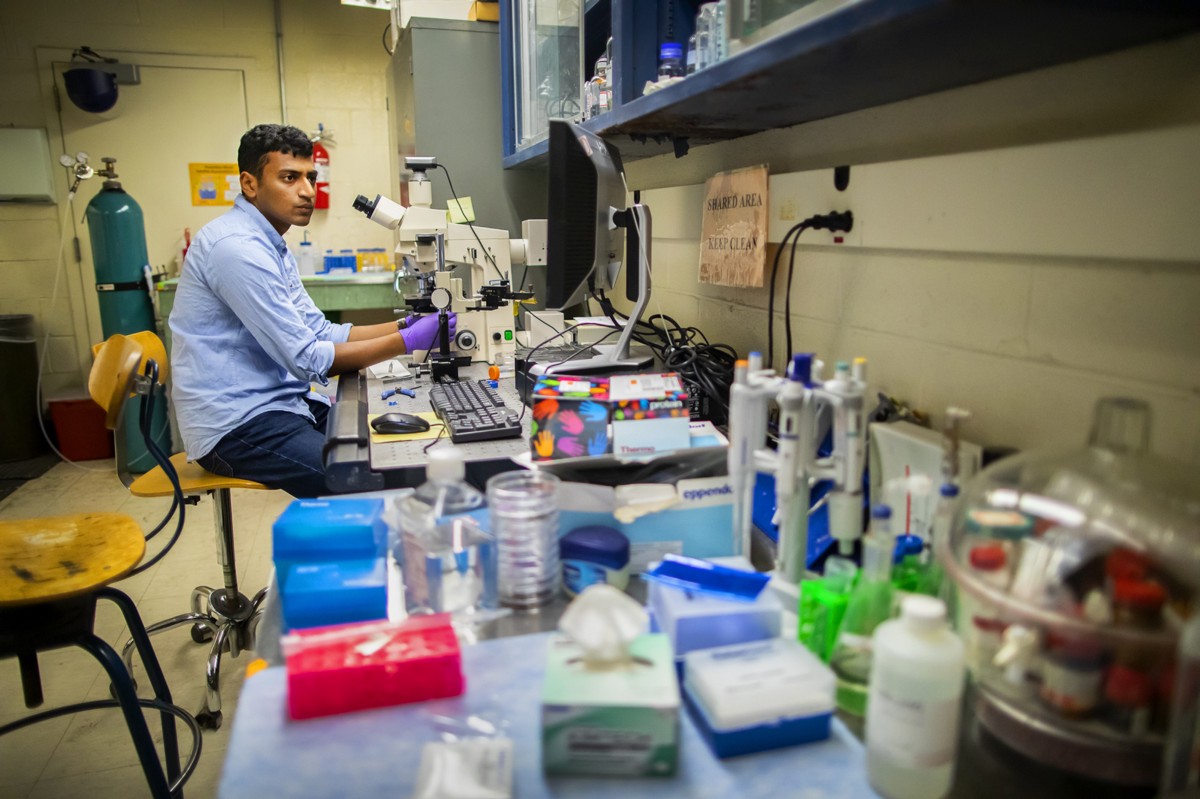From the Classroom to the Lab and Back Again
Senior Adithya Sriram is busy earning two degrees, researching new applications for graphene, and preparing physics courses for students in West Philadelphia.

By Erica K. Brockmeier
Adithya Sriram has always had an interest in physics. But after learning about Penn’s Vagelos Integrated Program in Energy Research (VIPER), he decided that the chance to study both physics and chemical engineering was one he couldn’t turn down. “I wasn’t going to do engineering, but the fact that I got into this program afforded me the opportunity,” says the senior from Columbus, Ohio.
A joint initiative between the School of Arts and Sciences and the School of Engineering and Applied Science, VIPER enables students to earn degrees from both schools while also conducting summer research projects. For Sriram, that has entailed working in the experimental nanoscale physics lab of Charlie Johnson since the summer following his freshman year, developing graphene field effect transistors to detect biological molecules such as proteins or DNA in biological samples. And to top things off, he and a group of Penn students travel to Paul Robeson High School each Friday to teach physics to 10th graders.
Transistors are found everywhere in modern electronics, enabling the creation of small, inexpensive devices from radios to clocks to computers. Using a voltage signal, the transistor can control the flow of electrons, switching between an “on” and “off” state.
To broaden the application of transistors to disease diagnosis, the Johnson lab focuses attention on transistors’ transitional state, between “on” and “off,” where the device is extremely sensitive and the flow of electrons can be precisely measured.
Using atomically-thin graphene as a starting point, the transistors can be customized to detect a wide range of targets based on the biological molecule that the researchers attach to the graphene. In a typical week, Sriram spends his time synthesizing new devices, testing the sensor’s response against known concentrations of biomarkers, and figuring out what changes can be made to the structure of the material to improve its sensitivity.
The goal is to use these devices to detect disease biomarkers, biological molecules that can help diagnose diseases before symptoms appear. To make progress, Sriram spearheaded a collaboration with Kelvin Luk at the Center For Neurodegenerative Disease Research to add aptamers, small chains of DNA that work as sensors for a wide array of biological molecules, onto graphene devices. “He went and found a collaborator at Penn — only one other student has ever done that before. Understanding that there’s a connection and realizing that it’s a real opportunity are terrific things.”
Continue reading on Penn Today.
